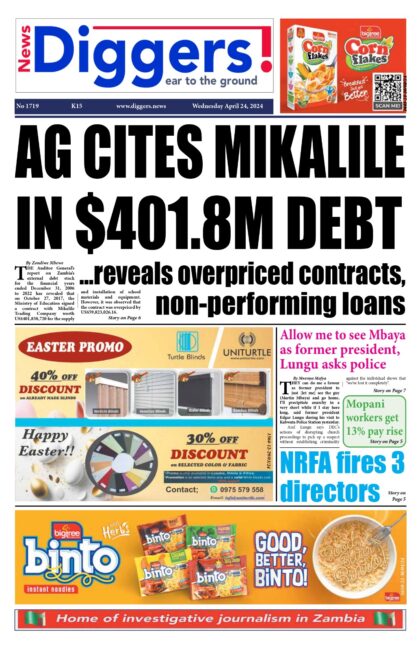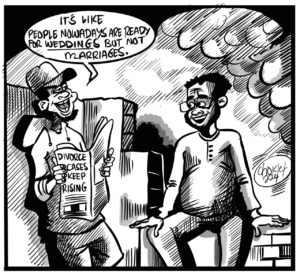Judiciary Chief Administrator Nalishebo Imataa has admitted to the audit findings that the institution has 460 vacancies, saying a number of courts have been closed due to inadequate staffing.
The 2016 Auditor General’s report on the accounts of parastatal bodies for the financial year ended December 31, 2016 revealed that the judiciary has a total of 460 unfilled vacancies among them 85 key positions.
In response to the audit query as to why the vacancies had not been filled at the time of the audits in July 2017, Imataa attributed the failure to lack of fiscal space in the 2016 budget which, if accorded, would enable the judiciary obtain Treasury authority from the Ministry of Finance.
Zambezi East UPND member of parliament Brian Kambita was the first one to ask a follow up question to the judiciary’s response to the audit findings.
“I want you to categorically state which one of these vacancies stated here are within your control in terms of them being filled and which ones are not within your control in terms of them being filled. And what implications does this void left by these vacancies have on the optimum operations of the judiciary, as it is suppose to?” Kambita asked.
In her response, imataa said her responsibility only ended at appointing local and subordinate court staff.
“The vacancies that are within my control are [for subordinate court and local court]. The Honorable judges of the High Court are appointed by His Excellency. The implications of the closed court, chair you will note that most of the local courts are in chiefdoms, they are widespread and so far, we have many of the courts closed up because they don’t have manpower. So we have a serious crisis at local court level. And we are hoping that with the treasury authority that will be granted this year, we can reactivate some of these positions,” Imataa responded.
Then Chirundu UPND member of parliament Douglas Syakalima said: “You said that you have nothing to do with filling these vacancies. I am wondering whether you are telling us that we shouldn’t be making these queries?”
Imataa, in response, said, “The treasury authority [that] I am granted, those that go to the Judicial Service Commission are for the Subordinate Court and the Local Court. Yes, for the High Court, it’s the Judicial Service Commission. What I wish to clarify is that when the Secretary to the Treasury gives the authority, the number of judges are already specified as the different pieces of legislation governing the various courts like for instant the Supreme Court is at 13, so the vacancies are already there but only six (6) have been appointed, Court of Appeal, the number prescribed is 19, at the time of audit, eight were filled; and for the High Court again, the prescribed number is 60.”
Asked why the judiciary was slow in the dispensation of justice, Imataa said that backlog was being looked into.
“Indeed there are issues of backlog, delays that we admit. But certain measures have been put in place. We have progressively recruited research advocates to help the judges in conducting research so that they don’t spend so much time in looking for reference materials and also court reporters to help in taking down court proceedings. And on the query about judges, chair, it would be best if this issue is addressed to the [Judicial Service] Commission,” she added.
Meanwhile when asked by committee member Mumbi Phiri on the judiciary record assets, Imataa said there was no comprehensive figure on the value of its assets other than the motor vehicles which were insured on a yearly basis.
“It’s true that we started the exercise of numbering assets in 2012 but we couldn’t complete the exercise because of lack of funding. Chair, you would wish to know that the judiciary has over 501 Local Courts, over 150 subordinate courts included with the High Courts. So it means that the officers, together with officers from Ministry of Works and Supply, have to go in the field to number the assets. And its true honorable members that for assets like buildings and so on, it has been very difficult to insure the buildings because we don’t know the value. However, for the vehicles, we do insure them on a yearly basis. But we still need to go back to the Ministry of Works and Supply to help us with the evaluation of structures that were built a long time ago. So in short, we don’t have a comprehensive figure to say this is the value of our assets other than the motor vehicles,” said Imataa.












